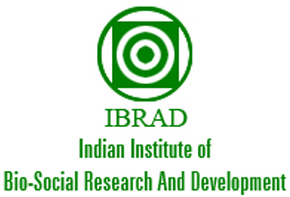Forest Mosaic Landscape and Agroforestry
The tribal inhabits the area of a forest mosaic landscape that contains cluster of different natural ecosystems like forest, meadows, pasture, agriculture land, freshwater bodies that are interconnected and interdependent and are spatially arranged in tandem. These natural ecosystems are functionally linked with each other and produce host of ecosystem services that directly contribute towards meeting the livelihood and well-being of the community. The sustainability of the ecosystems and sustainable flow of the ecosystem services depend upon the maintenance and strengthening of the functional linkages among these ecosystems. The forest mosaic landscape cannot be sustainably managed by addressing any one of the ecosystems. It requires an understanding of the linkages among all the constituent ecosystems of the landscapes and the land management plan must address the need of strengthening such linkages. The mosaic landscapes maintain the biodiversity, maintain the biological corridors, contributes towards pollination and crop production and the natural carbon cycle.
The small holder farmers generally depend on multiple ecosystems of the mosaic landscape to meet their livelihood needs The mosaic landscape enhances socioecological resilience of the small holder farmers, increase their risk bearing capacities and reduces the vulnerabilities.
IBRAD has developed the method of Integrated Forest Mosaic Landscape Management by involving the local community and the forest field staff. The smallholder tribal village landscape is identified as a unit for intervention. The area is marked through Google Map and the diverse ecosystems existing within the landscape and their status are identified.
It is followed by field-level exercises to identify the landscape components and features and the drivers of degradation through transect walk and participatory mapping by involving the local people and the field staff.
Based on the findings plan of actions are made to revive the functionalities of the ecosystems. One of the major intervention is to identify the blank patches both within and outside the forest area and plan for covering the area through plantation.
Seed balls are prepared by collecting seeds from the forests and are thrown in the forest area for regeneration.
For outside the forest area agroforestry technique is followed by adopting land-use systems with plantation of woody perennials (trees, shrubs etc.) alongside agricultural crops on the same piece of land-management units in some sort of spatial arrangement. It helps in diversifying the resource base, promotes landscape diversity as well as biodiversity through the integration of trees on farms and in the agricultural landscape. It also helps securing livelihood and sustenance needs of the smallholder farmers by procuring diverse resources from the same parcel of land. may improve their sustenance and livelihood. IBRAD is promoting the Agroforestry Model by mixing Fruit plants with the agriculture crops. It is found that mixing rows of trees with field crops gives better results by increasing land use efficiency, and reducing the economic risks.



